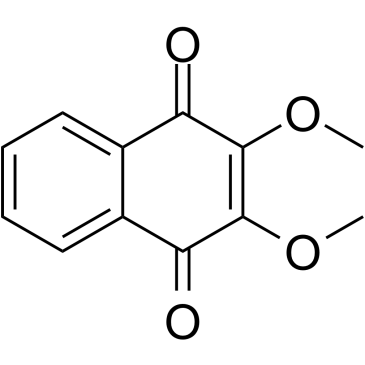Oxidative stress induces internalization of the bile salt export pump, Bsep, and bile salt secretory failure in isolated rat hepatocyte couplets: a role for protein kinase C and prevention by protein kinase A.
Leonardo M Pérez, Piotr Milkiewicz, Elwyn Elias, Roger Coleman, Enrique J Sánchez Pozzi, Marcelo G Roma
文献索引:Toxicol. Sci. 91(1) , 150-8, (2006)
全文:HTML全文
摘要
We have shown that Ca2+-mediated protein kinase C (PKC) activation induces impairment of bile salt secretory function and F-actin redistribution in hepatocyte couplets. Because oxidative stress induces Ca2+ elevation, we tested here whether PKC inhibition or protein kinase A (PKA) activation, which often counteracts PKC-dependent effects, can prevent and reverse these alterations. The pro-oxidant compounds tert-butylhydroperoxide (tBOOH, 100 microM) and 2,3-dimethoxy-1,4-naphthoquinone (30 microM), reduced by -41% and -29%, respectively, the percentage of couplets accumulating the fluorescent bile salt analog, cholyl-lysylfluorescein in their canalicular vacuoles (p < 0.01). tBOOH-induced bile salt secretory failure was accompanied by internalization of the canalicular bile salt export pump (Bsep), and disarrangement of cytoskeletal F-actin. All these deleterious effects were fully prevented by the intracellular Ca2+ chelator BAPTA/AM (20 microM), the pan-specific PKC inhibitors H7 (100 microM) and staurosporine (1 microM), the inhibitor of Ca2+-dependent PKCs, Gö6976 (2 microM), and the PKA activator dibutyryl-cAMP (500 microM). H7, Gö6976, and dibutyryl-cAMP not only prevented but also fully reversed the decrease in the cholyl-lysyl-fluorescein accumulation. In conclusion, these results suggest that low levels of oxidative stress impair bile salt secretion by internalizing Bsep through a Ca2+-dependent, PKC-mediated mechanism, and that inhibition of PKC, or activation of PKA, prevents and reverses these effects. Alterations in actin organization may be a causal factor.
相关化合物
| 结构式 | 名称/CAS号 | 分子式 | 全部文献 |
|---|---|---|---|
 |
2,3-二甲氧基-1,4-萘醌
CAS:6956-96-3 |
C12H10O4 |
|
Carvacrol and rosemary essential oil manifest cytotoxic, DNA...
2014-01-01 [Neoplasma 61(6) , 690-9, (2014)] |
|
Posttranslational Regulation of Human DNA Polymerase ι.
2015-11-06 [J. Biol. Chem. 290 , 27332-44, (2015)] |
|
Hypoxia drives transient site-specific copy gain and drug-re...
2015-05-15 [Genes Dev. 29 , 1018-31, (2015)] |
|
Cancer-associated fibroblasts expressing CXCL14 rely upon NO...
2014-06-01 [Cancer Res. 74(11) , 2999-3010, (2014)] |
|
Quinone-induced protein handling changes: implications for m...
2014-10-15 [Toxicol. Appl. Pharmacol. 280(2) , 285-95, (2014)] |